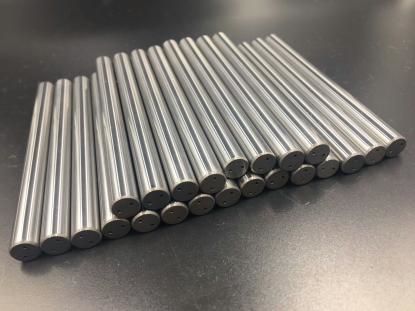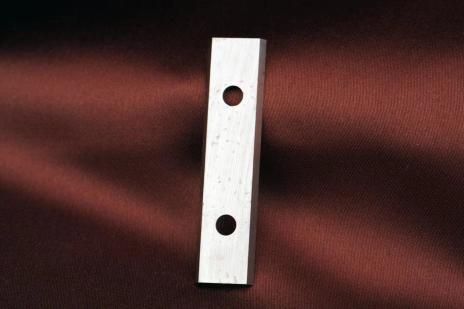Cemented carbide concept: a composite material produced by powder metallurgy consisting of a refractory metal compound (hard phase) and bonded metal (bonded phase).
The matrix of cemented carbide consists of two parts:One part is the hardened phase:The other part is the bonding metal.
The hardened phase is the carbide of the transition metals in the periodic table of elements, such as tungsten carbide, titanium carbide, tantalum carbide, which are very hard and have a melting point of more than 2000℃, some even more than 4000℃. In addition, the transition metal nitrides, borides, silicides also have similar properties and can be used as hardening phases in cemented carbide. The presence of the hardened phase determines the extremely high hardness and wear resistance of the alloy.
The bonding metals are generally iron group metals, commonly cobalt and nickel. For the manufacture of cemented carbide, the raw material powder is selected with a particle size between 1 and 2 microns and a high degree of purity. The raw materials are dosed according to the prescribed composition ratio, added to alcohol or other media in a wet ball mill, wet grinding, so that they are fully mixed, crushed, dried, sieved and added to wax or gum and other types of molding agents, and then dried, sieved and made into a mixture. Then the mixture is granulated, pressed, and heated to near the melting point of the bonded metal (1300~1500℃), the hardened phase and the bonded metal will form a eutectic alloy. After cooling, the hardened phase is distributed in the lattice composed of the bonded metal and is closely linked to each other to form a solid whole. The hardness of cemented carbide depends on the hardening phase content and grain size, i.e. the higher the hardening phase content and the finer the grain size, the greater the hardness. The toughness of cemented carbide is determined by the bonding metal, and the higher the bonding metal content, the greater the bending strength.
The basic characteristics of cemented carbide:
1)High hardness, high wear resistance
2)High modulus of elasticity
3)High compressive strength
4)Good chemical stability (acid, alkali, high temperature oxidation resistance)
5)Low impact toughness
6)Low coefficient of expansion, thermal and electrical conductivity similar to iron and its alloys
Cemented carbide applications: modern tool materials, wear resistant materials, high temperature and corrosion resistant materials.
Advantages of carbide tools (compared to alloy steel):
1)Exponentially, dozens or even hundreds of times to improve tool life.
Metal cutting tool life can be increased by 5-80 times, gage life increased by 20-150 times, mold life increased by 50-100 times.
2)Increase metal cutting speed and crust drilling speed exponentially and tens of times.
3)Improve the dimensional accuracy and surface finish of machined parts.
4)It is possible to process difficult to machine materials such as heat-resistant alloy, effect alloy and extra-hard cast iron, which are difficult to process by high-speed steel.
5)Can make certain corrosion-resistant or high-temperature-resistant wear-resistant parts, thus improving the precision and life of certain machinery and instruments.
Classification of Cemented Carbide:
1. WC-Co (tungsten drill) type alloy: composed of tungsten carbide and cobalt. Sometimes in the cutting tool (sometimes also in the lead tool) add 2% or less of other carbide (tantalum carbide, niobium carbide, vanadium carbide, etc.) as additives. High cobalt:20-30%, medium cobalt:10-15%, low cobalt:3-8%
2. WC-TiC-Co(tungsten-iron-cobalt)-type alloy.
Low titanium alloy:4-6% TiC, 9-15% Co
Medium Chin alloy:10-20% TiC, 6-8% Co
High titanium alloy: 25-40% TiC, 4-6% Co
3.WC-TiC-TaC(NbC)-Co alloys.
WC-TiC-Co alloy has better high temperature oxidation resistance and also better thermal shock disturbance, thus often has higher tool life. TiC:5-15%, TaC(NbC):2-10%, Co:5-15%, the rest is WC.
4. Steel cemented carbide: composed of tungsten carbide or titanium carbide and carbon steel or alloy steel.
5. Titanium carbide based alloy: composed of carbon than titanium, nickel metal and molybdenum metal or molybdenum carbide (MoC). The total content of nickel and molybdenum is usually 20-30%.
Carbide can be used to make rotary burr, CNC blades, milling cutters, circular knives, slitting knives, woodworking blades, saw blades, carbide rods, etc.


Post time: Jul-07-2023
